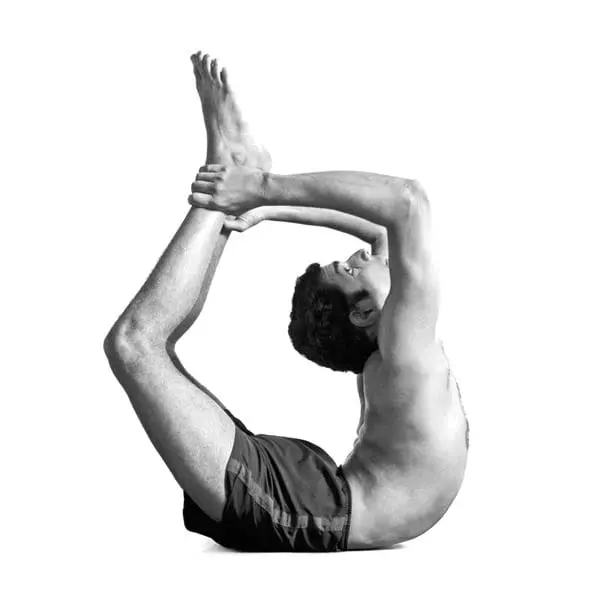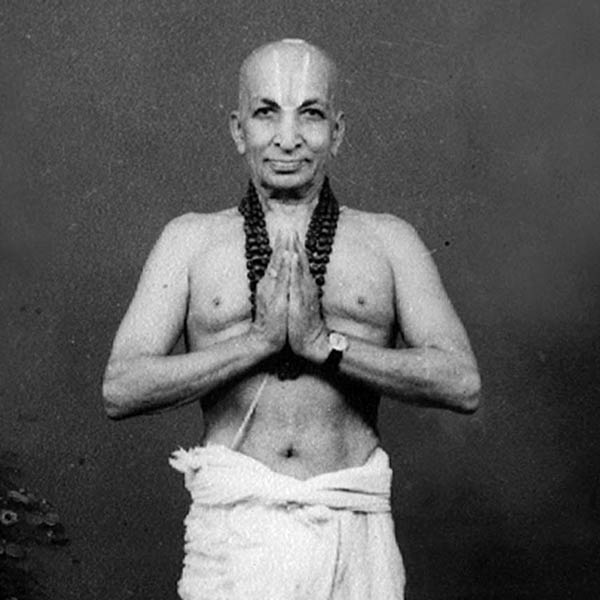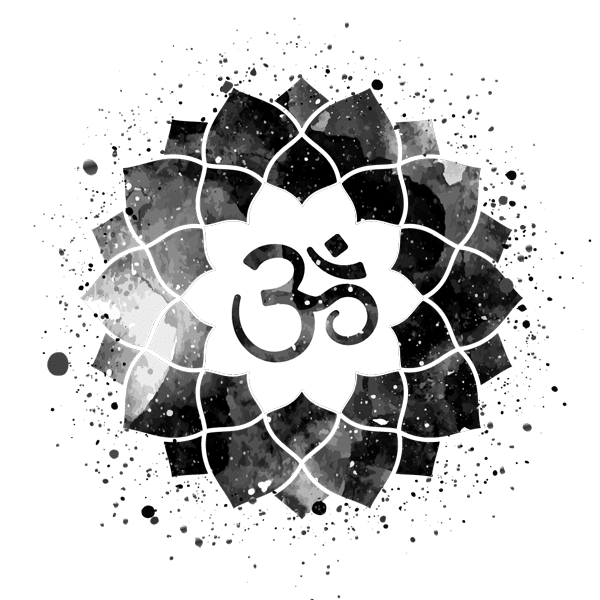ASHTANGA
THE
EIGHT LIMBS

Around two thousand years ago, a sage by the name of Patanjali composed the Yoga Sutras, a collection of 196 aphorisms on Yoga. It is one of the most important classical treatises on yoga philosophy and practice. In Chapter 2 of the Yoga Sutras, Patanjali prescribes adherence to an eight-fold path of yoga, otherwise known as “Ashtanga Yoga” (“ashta” meaning “eight”, “anga” meaning “limb” in Sanskrit).
THESE EIGHT STEPS OF YOGA INCLUDE:
- yama—moral codes or restraints, regulating how we behave with others
- niyama—observances or commitments, particularly to ourselves, to be followed in our daily life
- asana― the physical postures of yoga
- pranayama―control of the breath, or “prana”, the vital life force
- pratyahara―withdrawal of the senses, drawing oneself inward and remaining unaffected by the external world or impressions of the mind
- dharana―concentration, holding steady focus
- dhyana―meditation, a prolonged and uninterrupted state of one-pointed concentration
- samadhi―complete absorption and realization of higher consciousness
Yama and niyama are the ethical practices that help one develop a yogic lifestyle.
THE FIVE YAMAS CONSIST OF:
- ahimsa―non-violence, in our words, thoughts and actions
- satya—truthfulness, towards others and ourselves, in our words and actions
- asteya―non-theft, not stealing property that belongs to others, or acquiring property that does not rightfully belong to us, both tangible and intangible
- brahmacharya―preservation of sexual energy, respecting the fidelity of relationships
- aparigraha―non-grasping, non-hoarding of things and ideas, to be without greed
THE FIVE NIYAMAS CONSIST OF:
- saucha―cleanliness, both internal and external, keeping the mind and the body pure
- santosha―contentment, being happy with whatever we have, maintaining equanimity
- tapas―self-discipline, austerity, the heat that is generated by practice, the burning off of impurities
- svadhyaya―self-study, going deeper into practice through self-inquiry and continued study of yogic scriptures and teachings
- Ishvara pranidhana―devotion or surrender to a higher power (i.e., God)
The first steps we must practice are the four externally oriented limbs: yama, niyama, asana, pranayama. Learning to control our behavior through yama and niyama, our body through asana, and our breath through pranayama, we build a strong foundation for the practice of the remaining four limbs. As we become grounded in the external limbs, the inner limbs (“antaranga“) of pratyahara, dharana, dhyana and samadhi may be cultivated, leading us to self-realization and understanding the true nature of the soul.
By integrating these principles of yoga into our daily living, we begin to see yoga as much more than just a physical practice; we begin to see yoga as a way of life. In the modern world, we are often so rushed that we want to bypass the philosophical aspects of yoga and get on with the practice of the third limb (asana). However, by embracing the spiritual realm of yoga, by immersing ourselves in the practice of all eight limbs, we can gain an understanding of the true wisdom that this ancient tradition has to offer.
IMPORTANT ASPECTS OF THE ASHTANGA YOGA METHOD

Vinyasa.The synchronization of breath and movement. For each posture there is a vinyasa, a specific method for entering and exiting the posture, with each movement accompanied by either an inhale or an exhale. This coordination of breath and continuous movement purifies the body as it builds internal heat, eliminating toxins released through sweat, and adds fluidity to the practice.
Breath. Breathing in and out through the nose, while contracting the muscles of the throat, a subtle hissing sound is made with the breath. The breath should be steady and continuous throughout asana practice, with inhalation and exhalation of equal lengths. Correct breathing increases circulation and builds internal heat, thereby helping to dispel toxins and purify the body. The breath is an essential tool which can be used to relax the body and calm the mind both in our practice and daily life.
Asana. Meaning “posture”. The physical practice of asana should be done in a methodical way with correct alignment and proper guidance from a guru. An asana should be perfected before continuing on to the next one, allowing oneself time to become steady and comfortable in each posture, while building the strength, stamina, and flexibility required for later postures. Too many asanas too quickly can injure the body. Our focus should be on the quality of the postures being practiced, not quantity.
Drishti. The gazing point. There are nine points of Drishti in the asana practice. Looking to a specific point on the body helps to align the neck and spine correctly in each posture. Drishti also helps to improve concentration and focus the mind, leading to greater calm and steadiness and increased self-awareness in practice and daily life.
Bandha. Meaning “to close” or “seal”. Bandhas are energy locks that are used in conjunction with our breath to keep energy from exiting the body, primarily through “mula bandha”, the root lock, or lifting of the pelvic floor, and “uddhiyana bandha”, the lower abdominal lock. Engagement of the bandhas throughout the practice gives strength and lightness to the body.
By fixing our attention on our posture, breath and gaze, purification takes place on three levels during yoga practice: in the body, the nervous system and the mind. These three places of attention or action are referred to as tristhana.
The six poisons. A key aspect of internal purification relates to the six poisons that surround the spiritual heart. In the yoga scriptures, it is said that God dwells in each of our hearts in the form of light, but this light is covered by six poisons: kama, krodha, moha, lobha, matsarya and mada. These are desire, anger, delusion, greed, envy, and sloth. When yoga practice is done with the correct bhavana (thoughts and intention) and sustained with great diligence and dedication over a long period of time, the heat generated from it burns away these poisons, allowing the pure inner light of our soul to shine through.
BEGINNINGS OF THE ASHTANGA YOGA METHOD

The Ashtanga Yoga method was first described by the sage Vamana Rishi in the ancient scripture, the Yoga Korunta. This ancient text was discovered by Shri Tirumalai Krishnamacharya in the National Archives of India in the early 20th century. In 1916, Krishnamacharya traveled far into the Himalayas to seek out a yoga master. There in a cave near Nepal, he spent eight years studying Ashtanga Yoga with his guru, Shri Ramamohan Brahmachari. During this time, Krishnamacharya learned the complete Ashtanga Yoga method, including details about vinyasa, bandha and drishti. After parting with his guru in 1924, Krishnamacharya traveled around India, sharing the Ashtanga Yoga practice and teachings wherever he went. A few years later he arrived in Mysore, where he was hired by the Maharaja to open a yoga school. In 1927, at the young age of twelve, Pattabhi Jois became Krishnamacharya’s student, and remained a student of his for over 25 years. As Krishnamacharya prepared to leave Mysore in 1941, he handed over the teachings of Ashtanga Yoga to Jois, his oldest student. Respectfully addressed by his students as Guruji, Shri K. Pattabhi Jois taught Ashtanga Yoga for nearly 30 years before the first westerner came to study with him at his home in Mysore in 1964. In 1975, Guruji made his first trip to California, marking the beginning of Ashtanga Yoga in the United States and abroad. Over the years, Guruji instructed thousands of people in the Ashtanga Yoga method out of his yoga shala in Mysore. As a result of his tireless devotion to the tradition, these teachings have spread all over the world and continue to be passed on under the parampara of his daughter, Shrimati R. Saraswathi Jois, and grandson, Shri R. Sharath Jois, who is the current lineage holder and heads the K. Pattabhi Jois Ashtanga Yoga Institute (KPJAYI) in Mysore, India.
To learn more about the Jois family, their life and yogic upbringing, read on HERE.
PARAMPARA

Parampara is the knowledge that is passed down from guru to shishya, from teacher to student, through generations. It is at the heart of any lineage; the uninterrupted succession of teachings, based on direct and practical experience. Like other classical teachings, yoga instruction, in order to be true, complete and fully understood, should come from parampara. It should not be learned through books and videos, but from an authentic teacher who has spent years in practice and devotion to their own sadhana (practice towards a spiritual goal). True knowledge, or jnana, is passed on in the form of verbal, physical and energetic transmissions, through years of dedicated practice with a guru to whom the student has surrendered. In western culture, the idea of surrendering ourselves to someone else is often thought to be foolish and disempowering. We do not readily submit to others. However, in Eastern culture, this idea of surrendering oneself, and surrendering one’s fears, is what allows us to transcend our perceived limitations and gain true spiritual wisdom.
In following parampara, the dharma, or duty, of the student is to practice that which has been imparted by his or her teacher with diligence and faith. Knowledge grows from practice and experience, and from the mutual love and respect that is cultivated in one’s relationship with their teacher over time. Traditionally, when a guru took on a student, this meant taking on the student’s karma as well (one’s deeds and actions, both good and bad, and the consequences thereof), and accepting responsibility for their spiritual evolution and progress. The relationship of guru and shishya is not one which is taken lightly and entered into with a sense of great commitment and responsibility.
The teacher’s dharma is to teach the method just as he or she learned it from his or her guru. The teacher should lead by example, and present the teachings with sincerity and good intentions, in such a way that the student may eventually master the knowledge that the guru embodies. In modern times, many teachers are trying to create new traditions, renouncing or changing their guru’s teachings in favor of their own ways. Surrendering to parampara, however, is like entering an ancient river of teachings that has been flowing for thousands of years, which age-old masters have followed into an ocean of wisdom. Those who enter such sacred river do so with deep respect, humility, and devotion, honoring their teachers and the lineage from which these ancient traditions were born.
MANTRA

OPENING MANTRA
ॐ
वन्दे गुरूणां चरणारविन्दे
सन्दर्शित स्वात्म सुखाव बोधे ।
निःश्रेयसे जङ्गलिकायमाने
संसार हालाहल मोहशांत्यै ॥
आबाहु पुरुषाकारं
शंखचक्रासि धारिणम् ।
सहस्र शिरसं श्वेतं
प्रणमामि पतञ्जलिम् ॥
ॐ
auṁ
vande gurūṇāṁ caraṇāravinde
sandarśita svātma sukhāva bodhe |
niḥ-śreyase jaṅgali-kāyamāne
saṁsāra hālāhala mohaśāṁtyai ||
ābāhu puruṣākāraṁ
śaṁkhacakrāsi dhāriṇam |
sahasra śirasaṁ śvetaṁ
praṇamāmi patañjalim ||
auṁ
OM
I bow to the lotus feet of the Guru
The awakening happiness of one’s own Self revealed,
Beyond better, acting like the Jungle physician,
Pacifying delusion, the poison of Samsara.
Taking the form of a man to the shoulders,
Holding a conch, discus, and a sword,
One thousand heads white,
To Patanjali, I salute.
OM
CLOSING MANTRA
स्वस्तिप्रजाभ्यः परिपालयंतां
न्यायेन मार्गेण महीं महीशाः ।
गोब्राह्मणेभ्यः शुभमस्तु नित्यं
लोकाः समस्ताः सुखिनोभवंतु ॥
ॐ शान्तिः शान्तिः शान्तिः
svasti-prajā-bhyaḥ pari-pāla-yaṁtāṁ
nyāyena mārgeṇa mahīṁ mahīśāḥ |
go-brāhmaṇebhyaḥ śubham-astu nityaṁ
lokāḥ samastāḥ sukhino-bhavaṁtu ||
auṁ śāntiḥ śāntiḥ śāntiḥ
May all be well with mankind.
May the leaders of the earth protect in every way by keeping to the right path.
May there be goodness for those who know the earth to be sacred.
May all the worlds be happy.
Om peace, peace, peace
Follow